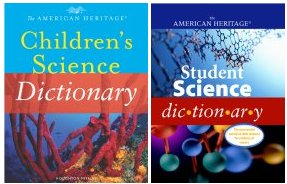Babies prove sound learners Additional Information
You can learn more about Patricia Kuhl’s work at ilabs.washington.edu/about/index.html (Institute for Learning and Brain Sciences, University of Washington).
For more information about the amazing baby brain, see www.pbs.org/wnet/brain/episode1/index.html(PBS).
Lots of information about the brain is available, in a kid-friendly format, at faculty.washington.edu/chudler/neurok.html (Neuroscience for Kids).
Sohn, Emily. 2007. Baby talk. Science News for Kids (May 30). Available at http://www.sciencenewsforkids.org/articles/20070530/Note3.asp.
______. 2006. How much babies know. Science News for Kids (March 22). Available at http://www.sciencenewsforkids.org/articles/20060322/Feature1.asp.
______. 2005. Wired for math. Science News for Kids (Dec. 7). Available at http://www.sciencenewsforkids.org/articles/20051207/Feature1.asp.
______. 2005. Teen brains, under construction. Science News for Kids (Sept. 28). Available at http://www.sciencenewsforkids.org/articles/20050928/Feature1.asp.
______. 2003. Wobbly babies: Smarter than they look? Science News for Kids (June 18). Available at http://www.sciencenewsforkids.org/articles/20030618/Note3.asp.
______. 2003. The social side of baby talk. Science News for Kids (June 11). Available at http://www.sciencenewsforkids.org/articles/20030611/Note3.asp.
Books recommended by SearchIt!Science:
![[book]](https://www.sciencenewsforstudents.org/wp-content/uploads/2019/11/a1642_b1627.jpg) |
The Brain: Our Nervous System— Seymour Simon
Published by William Morrow/HarperCollins, 1997.
Author Seymour Simon invites us to wiggle our toes and scratch our nose. These activities, and many others, are under the control of our brain, our body’s remarkable message center. The brain is made up of microscopic cells, such as neurons which carry signals from the brain to other parts of the body. Simon shows us a full page picture of neurons that have been magnified over 20,000 times! Neurons are very important in our daily lives. For example, if you touch something hot with your finger, signals travel through different kinds of nerves (bundles of neurons) in order to reach the brain. Your brain receives the “hot” message, and then sends a response to your spinal cord and to your motor nerves so that you can move your arm and get your poor finger out of harm’s way. This example gives you an idea of the complexity of the brain and the interdependence of the cells in the body. Everyday when you run, read, solve a problem, breathe, or throw a ball, remember to be grateful for your “wrinkled blob of pinkish gray jelly” that we know as the brain. Simon’s informative text and full page illustrations will help you to discover many fascinating features of the brain. |
![[book]](https://www.sciencenewsforstudents.org/wp-content/uploads/2019/11/a1642_b2126.jpg) |
Mind Tools: The Science of Artificial Intelligence — Fred Bortz
Published by Franklin Watts/Scholastic, 1992.
Computers are part of our everyday life, but can they think and make decisions for us? Not really, but computers are powerful tools. Technologies based on artificial intelligence enable computers to play chess, read and speak, diagnose diseases, and even compose music. This book explores the way the complex network of hardware and software allows computers to imitate and enhance our knowledge. But computers still have to be programmed by people. They have to be told what to do and given the basic information to process. The book includes profiles of some of the great pioneers of computers and artificial intelligence and a discussion of how artificial intelligence may be used in the future. Black-and-white line drawings and photographs, a glossary, an index, and a list of books for further reading are provided. |
![[book]](https://www.sciencenewsforstudents.org/wp-content/uploads/2019/11/a1642_b3645.jpg) |
Experiment with Senses— Monica Byles
Published by Lerner Publishing, 1994.
From the moment you wake up, you use all five senses to understand the world around you. Your sense organs— eyes, ears, tongue, nose, and skin—are picking up messages all the time and sending them to your brain. Investigate how your senses work with the book’s activities and explanations, which are accompanied by color photographs, diagrams, and drawings. Discover how the senses affect each other: convince a friend he is eating an onion when there is really an apple in his mouth. A discussion of what life is like for persons who do not have the full use of their senses is presented. An index and a glossary are included. |
Power Words
brain The part of the nervous system in vertebrates that is enclosed within the skull, is connected with the spinal cord, and is composed of gray matter and white matter. It receives and interprets impulses from sense organs, and it coordinates and controls body functions and activities, such as walking and talking. The brain is also the center of memory, thought, and feeling.
learning disability Any of various disorders of attention, memory, or reasoning that interfere with the ability to learn.
sound A type of energy that travels as waves and can often be detected by the ears. Sound starts out as a vibration of something, such as a guitar string. The vibration causes sound waves to move through another substance, such as air, water, or a piece of wood. Sound waves move through air at a speed of about 1,070 feet (326 meters) per second.
Copyright © 2002, 2003 Houghton-Mifflin Company. All rights reserved. Used with permission.
